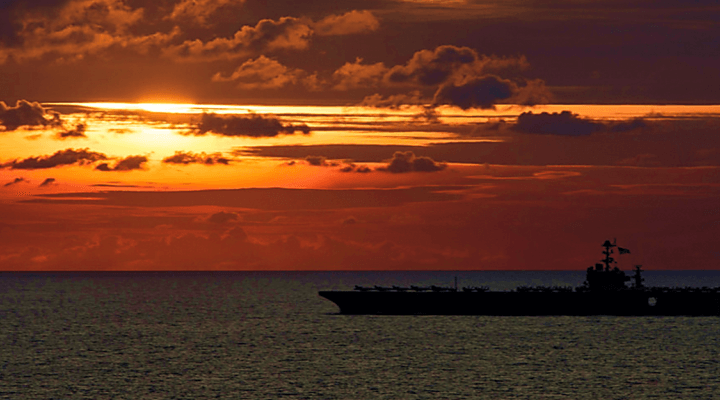After a series of deadly collisions between Navy warships and commercial vessels, most recently the USS John S. McCain’s collision with a civilian tanker, many are questioning whether the Navy has been hacked. It’s a far-fetched scenario, and bottom line up front, it’s extremely unlikely in this case. But it’s ascenario that cannot necessarily be dismissed out of hand. The Navy apparently agrees.
The chief of naval operations, Adm. John Richardson, told reporters that a cyber attack is “certainly something we are giving full consideration to,” but, he cautioned, “we have no indication that that’s the case yet.” Richardson assured the public that the Navy is “looking at every possibility, so we’re not leaving anything to chance.”
why suspect A CYBER ATTACK?
While reports call the area where the McCain collided with the Liberian-flagged tanker Alnic MC the Straits of Malacca, it’s more accurately the Singapore Strait, which is east of the Straits of Malacca. This narrow, 16-kilometer-wide channel (narrowing to 2.5 kilometers at one point) between Singapore, where the McCain was bound for a port call, and the Indonesian island of Sumatra, is one of the most crowded shipping lanes on the planet, and is a strategic choke point between the Pacific and Indian Oceans.
More than 70,000 ships pass through it every year, around 200 per day, including those carrying around 80 percent of the oil bound for Northeast Asia. The strait averages just under 2 collisions a year, according to a 2012 analysis published in The Journal of Navigation. Given the distances within which ships pass each other and the much greater distances required for large vessels to alter their courses, the relatively low number of incidents is a testament to old fashioned seamanship and new technology such as GPS and the automatic identification system, or AIS, which broadcasts a ship’s locations to other ships nearby.
It’s far more likely that the collision was due to an erosion in training standards than it was to cyber attack. The Navy believes that a loss of steering led to the McCain’s collision, but there is a possibility that more could have been in play. That the McCain’s crew did not, or was not able to, use the ship’s backup steering system leaves the door open to the possibility of foul play.
china fuels the speculation
Recent Chinese actions have only encouraged those who believe the McCain, and possibly even the USS Fitzgerald, which was involved in its own deadly collision in June, may have been the victims of a cyber attack.
The McCain was heading for Singapore after sailing through the South China Sea, an area where China has been increasingly bold in its territorial claims, engineering reefs into new islands and then placing military hardware and large runways on them. The U.S., and most of the rest of the world, disputes these territorial claims. In May, the U.S. Navy conducted its first “freedom of navigation operation,” a FONOP in Navy-speak, of the Trump Administration, when the USS Dewey sailed within 12 nautical miles of Mischief Reef, one of China’s artificial islands.
On August 11, ten days before the collision, the McCain also conducted a FONOP near Mischief Reef. The Chinese government said it was “strongly dissatisfied” with this operation. That’s diplomatic language for “red-in-the-face angry.” The McCain’s collision was the fourth major incident for the Seventh Fleet this year, and comes just two months after the deadly collision between the USS Fitzgerald and the Philippine container ship ACX Crystal, which killed seven sailors off the coast of Japan. The Fitzgerald is also reported to have conducted FONOPS in the South China Sea.
Following the collision, in a move that doesn’t sound like the actions of a country interested in finding common ground, the Chinese newspaper Global Times, whose editorials are widely believed to reflect the views of the country’s leadership, declared that “there is applause from Chinese netizens about the latest accident.”
Reports that a Chinese commercial vessel had been following the McCain and diverted course shortly before the collision add more gasoline to the fire.
Furthermore, in June, there was a very real incident in the Black Sea in which more than 20 ships reported that their GPS equipment was indicating that their ships were more than 25 nautical miles from where they actually were. In at least one case, the ship’s GPS display told them they were inland. The U.S. Coast Guard’s navigation center confirmed there were no problems with the GPS system at the time. All signs point to Russian interference.
A GPS spoof wouldn’t explain the McCain’s accident, but it is proof that electronic warfare on the high seas is a real and growing problem, a problem that cannot be ignored.




